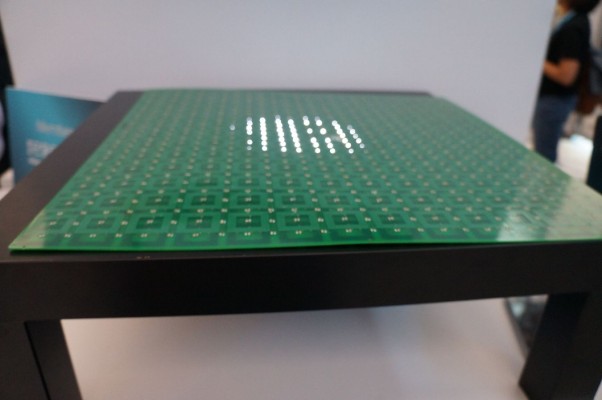Rezence Tech Wirelessly Charges Laptop - Through Tabletop
Today's wireless charging pads and covers are mostly a bad joke, because of competing standards, limited range and low wattage. However, Intel and its partners in the Alliance for Wireless Power (A4WP) are looking to change all that and make the new Rezence standard ubiquitous in offices, coffee shops, airport lounges and homes around the world.
Unlike the Qi standard and other wireless-power protocols currently in use, Rezence pads are able to charge devices through inches of wood, plastic or other non-metal materials. Using magnetic resonance technology, the new standard can also charge more than one device at a time, using the same pad. Better still, Intel and its partners expect to introduce pads that can deliver enough wattage to charge a laptop.
At the Intel Developer Forum day one keynote this week, SVP of PC Client Group Kirk Skaugen said that Rezence wireless charging will be as disruptive to the PC industry as the company's Centrino chipset, which added Wi-Fi as standard on every laptop a decade ago. During Skaugen's speech, an Intel rep charged a laptop by placing it on top of a thick wood desk, with a Rezence pad underneath. Skaugen pointed out that Intel's goal is to get rid of wires entirely, allowing you to not only charge without a plug but also transfer data using the high-speed WiGig standard, which Intel is also pushing.
MORE: How to Upgrade Your Laptop's Hard Drive to an SSD
In Intel's Advanced Technology Zone, I saw a demo with a circuit board on top of thick table and a charging pad underneath. As I moved the board around, a light on it turned on as the board slid over the location of the charging pad, showing that the power was coming through the table. When I put a specially-enabled laptop on top of the table, its keyboard lit up to show that the device was receiving power.

An Intel rep told me that the charging pad on display can penetrate through two inches of material and deliver up to 20 watts of power, enough to charge a laptop if it is not using a lot of juice at the time.
NXP, a company that makes sensors and chipsets, showed off a Rezence charging pad powered by one of its controllers. I was able to place two different phones, each connected to a Rezence receiver, on top of the pad and watch them charge. An NXP rep explained that the pad on display is capable of delivering up to 18 watts, enough to charge 3 phones or tablets. Future pads will deliver enough juice to power a laptop.
Stay in the know with Laptop Mag
Get our in-depth reviews, helpful tips, great deals, and the biggest news stories delivered to your inbox.
Though the first mass-market Rezence pads and receivers are still months away -- Skaugen said receivers would arrive in early 2015 -- the technoloogy shows a lot of promise. However, to truly change the game, Intel has to do more than show its support for the standard; it must work to integrate the receivers into devices and make sure that the pads being deployed have enough power to juice a laptop, something no current wireless-charging technology can even approach.

